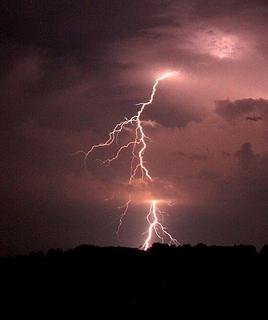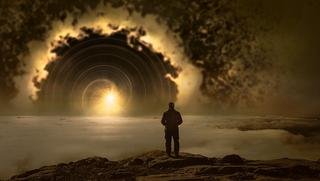Discussing my own research on Steemit: a stealthy fifth force at the Large Hadron Collider?
Experimental searches for a fifth force consist of one of the important ingredients of the particle physics experimental program of the Large Hadron Collider (better known as the LHC) at CERN.

[image credits: Pixabay]
The reason is that the existence of extra interactions (on top of electromagnetism and the weak and strong interactions) is predicted by many theories extending the Standard Model of particle physics.
I will restrain myself from discussing the motivations in going beyond the Standard Model of particle physics, as this could be the topic of a post on its own. I refer instead to an old Steemit article that I have written almost a year ago and where this is discussed.
In the present article, I come back to the way in which new forces are searched for at the LHC, extending the discussion that I have initiated in this post of last week.
The main focus of this post is however slightly different and addresses cases where a fifth force exists, but is stealthy and hence escapes detection.
FUNDAMENTAL INTERACTIONS AND THEIR MEDIATORS
Let us restart with the basics and briefly discuss how to detect a fifth force at the LHC. The way to introduce fundamental interactions in the microscopic world relies on gauge theories.
This can be summarized in very simple terms: each interaction is mediated by a given particle and two particles are said to interact when they exchange this mediator. This could be imagined as two kids playing on a beach and throwing a ball towards each other. The kids are our two particles and the ball our mediator.

[image credits: Pixabay]
If a fifth force exists, it must thus be connected to some mediator, and the best way to look for a fifth force would then be to look for its mediator that is often called a Z’ boson.
So now, we need to find this Z’ at the LHC. First, we must be sure that it can be produced. Otherwise, the story ends here (at least from an LHC perspective).
To guarantee the production a Z’ at the LHC, one needs it to interact with quarks, the most elementary building blocks of the atomic nuclei.
This is actually the case for many classes of theories extending the Standard Model, so that we have motivations to look for Z’ bosons (and thus a fifth force) at the LHC. But now, how can we detect these Z’ bosons?
DETECTION OF A FIFTH FORCE - THE BASICS
Z’ bosons are unstable particles. This means that once produced, they will quickly decay into other particles. In general, any pair of Standard Model particles would fit.
The golden candidates in the aim of a discovery consist of an electron-positron pair or a muon-antimuon pair. Those are the cleanest possible signatures of a Z’: we look for a muon-antimuon pair (super clean and super easy) or for an electron-positron pair (not as clean but still very easy) in the LHC detectors. Piece of cake!
Of course, there is no way to tell whether the pair has been produced from a Z’ decay or from a normal Standard Model process. This is where statistics comes into the game. More on this below.
Before moving on, Z’ decays into a pair of top-antitop quarks or of two lighter quarks (which gives rise to a so-called dijet system) are also possible, and thus searched for. But the signals are harder to find and distinguish from the background.
DETECTION OF A FIFTH FORCE - MY FAVORITE EXAMPLE
Let us now discuss muons and show how a Z’ is actually searched for at the LHC in the muon-antimuon channel. It is the same example as last week, but I will provide more details.
First, we must detect a muon pair and measure its properties. From these measurements, it is possible to reconstruct the mass of the particle from which the pair would arise. There may however be a real particle that has decayed into the pair, or not. This actually does not matter.
We reconstruct ‘the mass of the pair’ (that we note M) as if it was originating from the decay of a real particle.

[image credits: Inspire]
In the Standard Model, we can calculate the rate corresponding to the production of a muon-antimuon pair of mass M. What we get is a rate that is softly falling with the mass M.
This is illustrated in the picture on the right, with the exception of the bump in the middle.
This bump is a very interesting feature. It is called a resonance and is connected to the presence of a real particle that has given rise to the muon-antimuon pair that was detected.
The value of M corresponding to the bump (on the x-axis) consists of the mass of the particle that has decayed into the muon-antimuon pair. Here, the mass is of about 90 GeV: this is the mass of the Z-boson, one of the mediators of the weak force.
Looking for a Z’ mediating a fifth force is thus reduced to a bump-hunting exercise. And we should get the Z’-boson mass for free.
A FIFTH FORCE - EXPERIMENTAL STATUS
For the moment, no bump has been found in any of the search channel. Therefore, we can put strong constraints on the mass of the Z’, the mediator of a hypothetical fifth force, and thus on its existence.
The strongest constraints originate from bump-hunting in the electron-positron and muon-antimuon channels. Much weaker constraints can be deduced from the top-antitop and dijet (a quark-antiquark pair) channels.

[image credits: Wikimedia]
Since no sign of a fifth force has been observed, there are several ways to conclude.
1 - One can say that there is no fifth force and it is logical than we have not found anything. Sad!
2 - One can instead say that there is a fifth force, but its mediator is too heavy to be found with the current amount of LHC data. Sad too! At least for the next decade until more data is recorded.
3 - One can instead say that there is a fifth force, but the LHC is not the right machine to look for it. Sad too, but for an undetermined amount of time this time.
There is however a fourth possible conclusion: there is a fifth force, the mediator is light and within the reach of the LHC, but it is stealthy and evade all constraints.
The important exercise is thus to design experimental searches that are sensitive to this stealthy Z’. We need to be ready for all options!
A FIFTH FORCE - HOW TO EVADE THE EXPERIMENTAL CONSTRAINTS
This is the topic of my latest research work. We have shown that there are well motivated models of physics beyond the Standard Model that feature a fifth force and in which the Z’ is hard to find.
We have shown that in some models, the Z’ is predicted to be leptophobic. As a result, muons and electrons are insensitive to the fifth force, and the golden channel in which it is searched for is… useless.

[image credits: Pixabay]
Constraints exist, thanks to searches in the top-antitop and dijet modes, but they are weak. As a consequence, a light Z’ boson in the reach of the LHC is still possible, but is maybe not searched for in the right place.
We have shown that in fact, one of the best way to constrain some leptophobic Z’ boson models would be to search for them together with dark matter, in a combined way.
In some models, one of the Z’ favorite decay mode could be into an electron-positron or muon-antimuon pair, as before, but this time accompanied by a bunch of… dark matter particles! And these dark matter particles are sufficient to reduce all bounds!
The revenge of the dark side, somehow!
For the follow-up, we are currently in contact with some experimental colleagues do double check this signature in data. If we have a stealthy fifth force, we must be sure not to let it escape us!
For more discussion on this topic (or anything related to science), please join us on steemSTEM. SteemSTEM is a community driven project which seeks to promote well written/informative Science Technology Engineering and Mathematics postings on Steemit. More information can be found on the @steemstem blog.
We are currently consolidating our curation trail by different means. For more information, please contact us on the chat.
Thanks to this post, I was reassured what a beach was. A real slam dunk of a publication here @lemouth.
You all are likely searching for a ghost here. This fifth force probably doesn't exist and a different explanation will be necessary.
You too start to look for them :p
It may exist or not exist, but we have one set of experiments that can look for many things including a fifth force. Therefore, I think it is sane to consider all options. We already learn something in crossing out potential models of new physics.
Since dark matter doesn't react with regular matter at all, how will experiments at the LHC determine that this particular energy level or a particular collision's properties determines that there is a dark particle somewhere?
Dark matter actually can interact with normal matter. The only constraint is that it can't interact neither electromagnetically nor via standard strong interactions. Gravity is left, as well as the weak interactions. Many of the dark matter direct detection experiments and have been designed to target a specific class of dark matter candidates that are expected to interact via weak interactions.
At the LHC is work the same, dark matter can be produced via weak interactions, or via a fifth force if both the Standard Model particles and dark matter are sensible to a fifth force.
I hope I clarified! Otherwise please let me know! :)
Thanks I didn't know that dark matter interact via the weak force and I do hope that there is a fifth force. This will open up some new areas in physics!
Was dark matter first speculated in the LHC or during the observations of clusters of galaxies?
The idea is almost 85 years, although the word dark matter is more than 100 years old (I am actually planning to write on this in my next post. but it is not ready yet). The LHC is just one of the numerous ways to track dark matter.
Where are the detectors located at the LHC that are being used to look for this fifth force? Are the detectors the same ones that are shared for the other experiments that are happening like ATLAS?
There is no dedicated LHC detector looking for a fifth force. The ATLAS and CMS detectors are instead used. The ATLAS and CMS experiments have been built as generalist experiments that can probe varied phenomena, including not only those connected to extra forces but also Standard Model physics.
Its great to learn about the actual research of some of the top scientists on Steem. This stuff is definitely not my field, but your discussion of the possible explanations from the current experimental data and how that has led to your recent publication is understandable and an enjoyable read.
Thank you for your nice message :)
A fifth force? Star Wars is in serious need of some updating.
Posts like yours could benefit from the ability to hover over a word and get its definition. Hopefully steemit will one day give us this functionality.
Lol! Do you know that on April 1st, 2015, CERN published an article claiming that the Force (yeah, 'the Force' wth a capital 'F') had been discovered (please double check the date twice :p). It is interesting that I just remembered that event thanks to the last article of @nitesh9 :)
I am not so sure that I would have the energy to define every single word in my article. But I admit that it may make them sometimes hard to follow :p
Just read the CERN article, lol! There's absolutely nothing to indicate it's a joke, no "funny" tag or anything, so I'll just go ahead and put my trust in science and believe all of it!
nitesh9's article I'll read later, it looks very interesting but also quite longer!
Well, they put it on the web on April 1st. There is one of such joke every year :p
No, they updated it on April 2nd. So I believe them.
Naaah, don't :)
Comparison with science.very good
It is not really a comparison with science. It consists of science (but I have maybe misunderstood what yu meant). Thanks for passing by anyways! :)
Nice!
interesting content!
I find it too :)
Smashing particles is just destroying data. Even if you achieve a black hole you will erase all data but its pointless on this small scale since the fixed rules of physics surrounding the experiment are much more powerful and are already perfectly tweaked to create life and turn the experiment back into our local reality.
The force encourages increasing complexity and life at every scale.
I am not to sure to understand what you are talking about. The results of the collisions consist of data. It is not destroyed but instead recorded.
Very interesting.Great explanation and discussion, it is very important for all of people to understanding it, although just information consumption. From here (Mr. @Lemouth) we can see more wider of science. Thanks professor. Good luck.
Thanks to you for passing by, reading and commenting :)
I was sooo curious to know who was the physicist behind the very good vulgarization posts that I read. I'm glad you left a way to figure it out ;-)
My identity is not really hidden, although I try to maintain it at a under-the-radar level :p